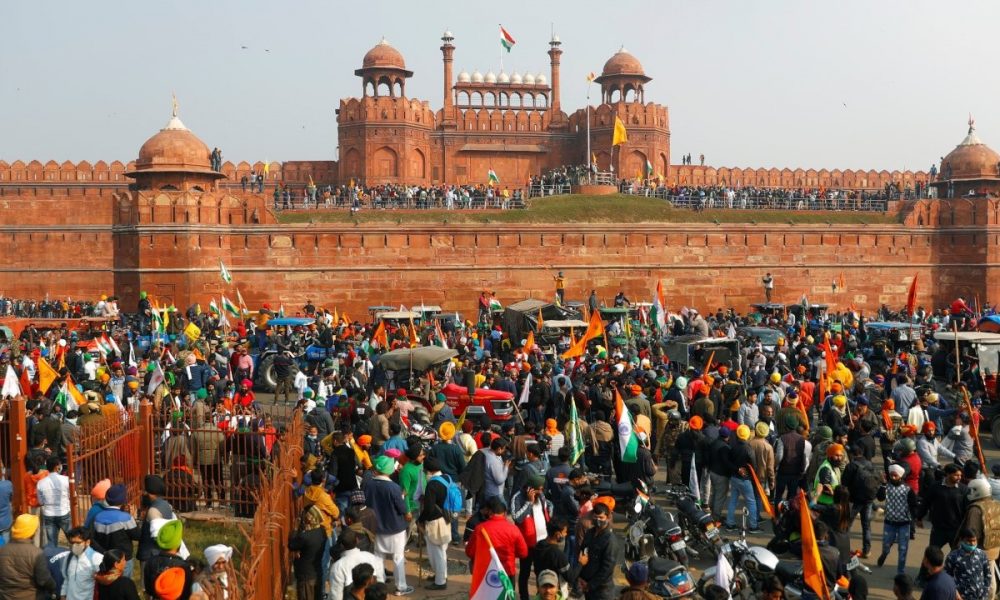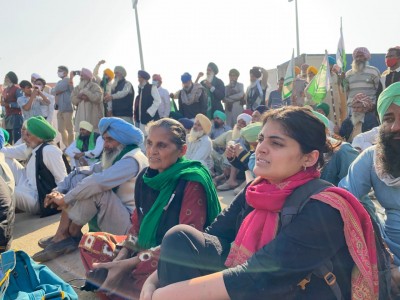OPINION
Is Indian farmers’ movement 2.0 here?

Navkiran Natt

On 20 March 2023, thousands of Indian farmers again made their way to Delhi. They gathered at Delhi’s Ramlila Maidan under the banner of the United Farmers’ Front or Sanyukt Kisan Morcha (SKM). Earlier, on 26 November 2020, farmers from two north Indian states named Punjab and Haryana marched toward the national capital Delhi to resist the three farm laws passed by the Indian government in mid-2020. These were, 1) the Essential Commodities (Amendment) Act, 2020; 2) the Farmers Produce Trade and Commerce (Promotion and Facilitation) Act, 2020 and 3) the Farmers (Empowerment and Protection) Agreement of Price Assurance and Farm Services Act, 2020. The agrarian crisis which led to thousands of farmers committing suicides every year and high indebtedness has been demanding reforms. But what the government did was diametrically opposite. Farmers saw it as a final push back towards corporatization and eventual land grab. Hence they organized, mobilized and marched towards Delhi. Farmers were met with brute state force on their way and on 27 November, they were stopped at the borders of Delhi where they finally decided to put up their camps. The visuals of brutality, and farmers’ resistance has ignited both fury and solidarity among the masses. In December 2021, SKM, the leading body of the Indian Farmers’ movement 2020-21 decided to suspend the yearlong live-in protest after the government took back the three controversial farm laws and assured to contemplate the pending demands, including a legal guarantee for MSP and the withdrawal of legal cases lodged against the protesting farmers. A recent farmers’ gathering in Delhi officially broke that suspension. So, here we are again at it. The historic farmers’ movement is back, but why? And what are the rallying points and is the recent historic victory working as a hope or creating performance pressure?
As India is approaching its next parliamentary elections in 2024, farmers again approached Delhi in large numbers. They alleged that the government did not fulfil its promise to take operative steps to resolve the issues faced by farmers. The farmer leaders are now strategizing in a decentralized two-tier manner to be more broad-based and representative of the diverse farming communities and their demands. First, making pan-India solidarities on the broader issues and anchoring the movement in Delhi; and second, mobilizing around local/regional agrarian issues and centering the movement at the state capital level. In terms of issues, nationally, they are focusing on two demands – a loan waiver of all agricultural debt and a legal guarantee of the minimum support price (MSP).
After the liberalization of the Indian economy in 1991, the agrarian crisis aggravated and by the early 2000s it has raised alarm both, socially and politically. Against this backdrop, the Indian government constituted a commission (2004-2006) to look into it. M.S. Swaminathan, who is known as the father of the green revolution in India, was tasked to head the commission. The commission’s recommendations, though dated, had been at the center of the reforms that farmer has been demanding. The commission recommended that the MSP should be at least 50% more than the weighted average cost of production according to the C2+50 percent formula, which is more comprehensive than the formula currently used by the Indian government. So, the Indian government’s claim of giving 50% over and above the cost doesn’t hold much ground in reality. The C2+50 percent formula takes the cost of inputs, family labour, rentals and any other cost incurred in the process, rather than how much the farmer paid out during that agricultural cycle. Along with it, the commission recommended improvement in the implementation of MSP. Arrangements for MSP need to be put in place for crops other than paddy and wheat which are the two main crops produced in most agrarian Indian states.
Rajinder Singh Deep Singh Wala
The SKM is rallying around these two demands, recommended by the government-appointed commission. Rajinder Singh Deep Singh Wala, an SKM leader says, “According to a recent study by National Sample Survey Office (NSSO), nearly 70% of the Indian farmers do not even know what MSP is, which makes it more important to raise the issue of MSP”. Definitely, the SKM has an uphill task to popularize this critical demand among farmers across the country as it has the potential to bring farmers together nationally as well as address the agrarian crisis in a very fundamental manner. The government constituted a committee to address the issue of MSP. But the members of the committee evoked great apprehension rather than trust among the farmers as it was unrepresentative. Thus, the SKM asked for the constitution of a fresh committee on MSP with due representation of the farmers. In the memorandum submitted by SKM to the government, other demands included are the withdrawal of the Electricity Amendment Bill, 2022, reduction of input prices including fertilisers, fixed pension for all the farmers above the age of 60, crop insurance to provide a safety net to the farmers in the time of climate change and compensation for nearly 750 farmers who martyred during the yearlong protest, mentioning a few.
The gap between these two major farmers’ protest gatherings in Delhi should not be read as a time of complete silence. Farmer organisations were mobilising localised state-wide protests on different issues. Farmers in Punjab protested to save water. In Karnataka, farmers protested against the refusal of private insurance companies to settle crop damage claims by farmers. In parts of Punjab, Haryana and Maharashtra farmers protested demanding fair compensation for rain-caused damage to crops during the recent untimely heavy rain. In Maharashtra, under the leadership of All India Kisan Sabha and other left farmer organisation, hundreds of tribal farmers marched more than 50 km to protest against the non-implementation of the Forest Rights Act (FRA) 2006. The act recognizes the rights of forest-dwelling tribal communities and other traditional forest dwellers over forest resources. Other demands include crop loan waiver and compensation for crop loss due to changing climatic conditions. These are only a few examples of localised yet foundational protests which often lay grounds for historical movements.
Recent times witnessed an upsurge of the farmers’ protests not only in India but globally. The movement started by Dutch farmers protesting over emission cuts spread across Europe including countries like Germany, France, Spain, and Belgium. European farmers argued that the government’s proposed plan would force farmers to reduce their livestock or stop work altogether. They believed it was an attempt to target farmers in the name of environmental concerns, instead of holding accountable the actual culprits, the big-corporates-led industrial sector. Farmers in many countries spread across continents, protested over increased input costs in agriculture, for example, Sri Lanka, Pakistan, Peru, Ecuador and Poland.
The SKM leadership is also looking at the global protests in continuity with the Indian farmer protests. As Singh says, “There is a rule of the capitalist structure. Either get big or get out.” He believes what is happening in Europe is an attempt to push the agrarian sector towards monopolisation. A similar attempt, made by the Indian government to monopolise agriculture in India by bringing the three farm laws, was challenged by the Indian farmers’ movement in 2020-21. He also thinks that people who advocate the policies of the green revolution are looking at Sri Lanka’s agrarian crisis as an opportunity to prove their point which in reality is a failed model. But, we need a more sustainable agrarian model like post-USSR Cuba which became the first country to establish an urban agriculture department. Dr. Darshan Pal, another SKM leader, says, “We are already at the doorstep of an unprecedented economic recession. So, what has happened in Sri Lanka or Pakistan is likely to happen in other countries as well. We have to be prepared.” The post-covid era with a decreasing number of jobs and drop in real wages in the non-agriculture sector has unfortunately strained the already fraught agriculture sector. A recent case is a farmer in Mansa, Punjab throwing his capsicum produce on the road as they were fetching them $1 for 80kg.
Dr. Darshan Pal says that the Indian farmers’ movement has a long history and the 2020-21 protests acted as a catalyst giving the movement a new momentum. As the SKM has announced the next phase of protest this month, they aim to make the farmers’ agenda a wider social-political agenda. In the coming months, their decentralized campaign will popularize the farmers’ demands in the areas beyond their current reach and aim to make it to the manifesto of all political parties. As Dr. Darshan Pal says “In today’s political scenario, farmers are the most apt group to do the same, as they have a very crystallized identity across the country.”
*By Navkiran Natt, a film/media researcher and activist based out of Delhi and Panjab, India.